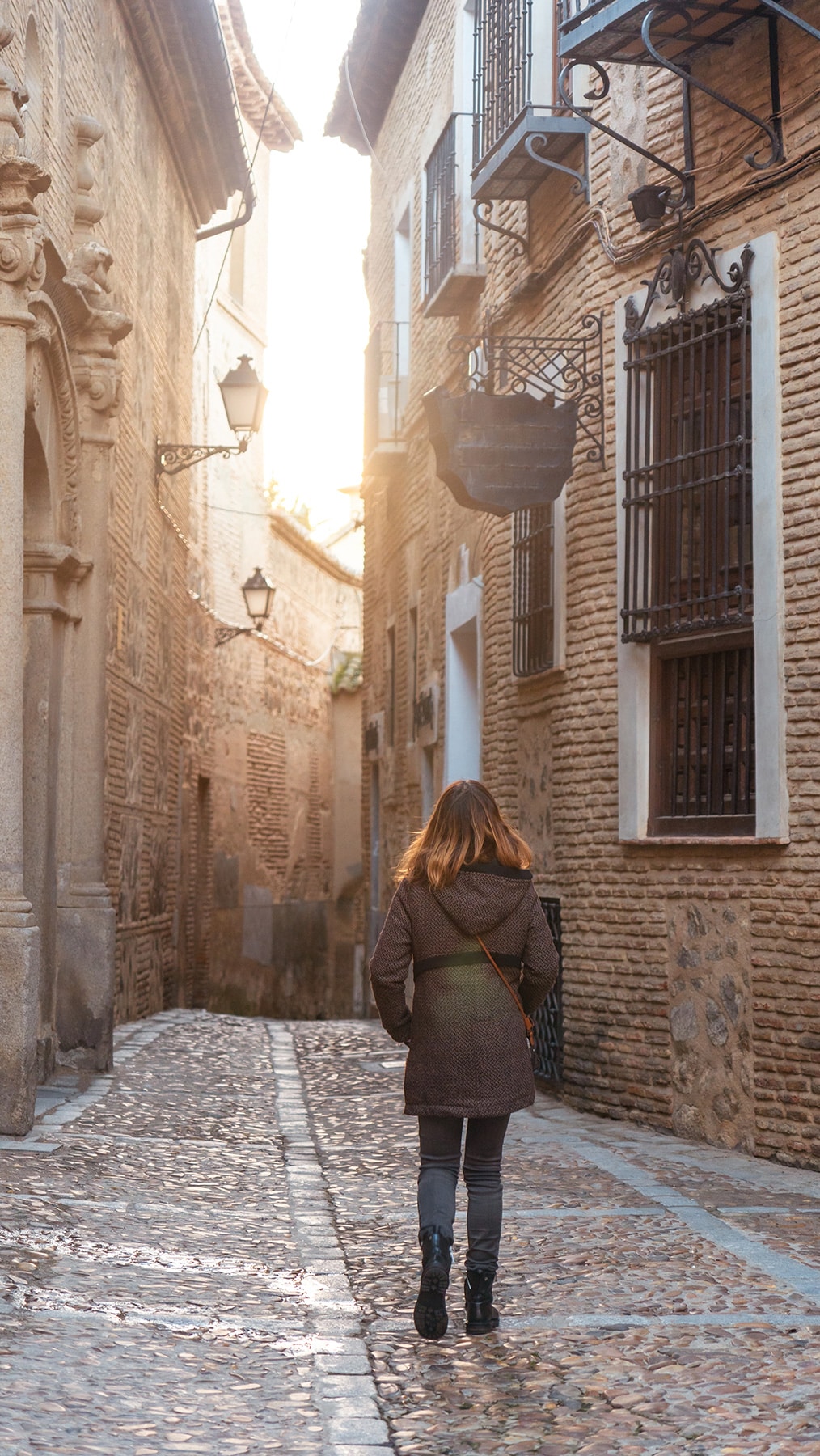Santo Tomé
A masterpiece of universal painting. The Burial of the Lord of Orgaz
perfectly captures all the virtues of El Greco’s brilliant mind
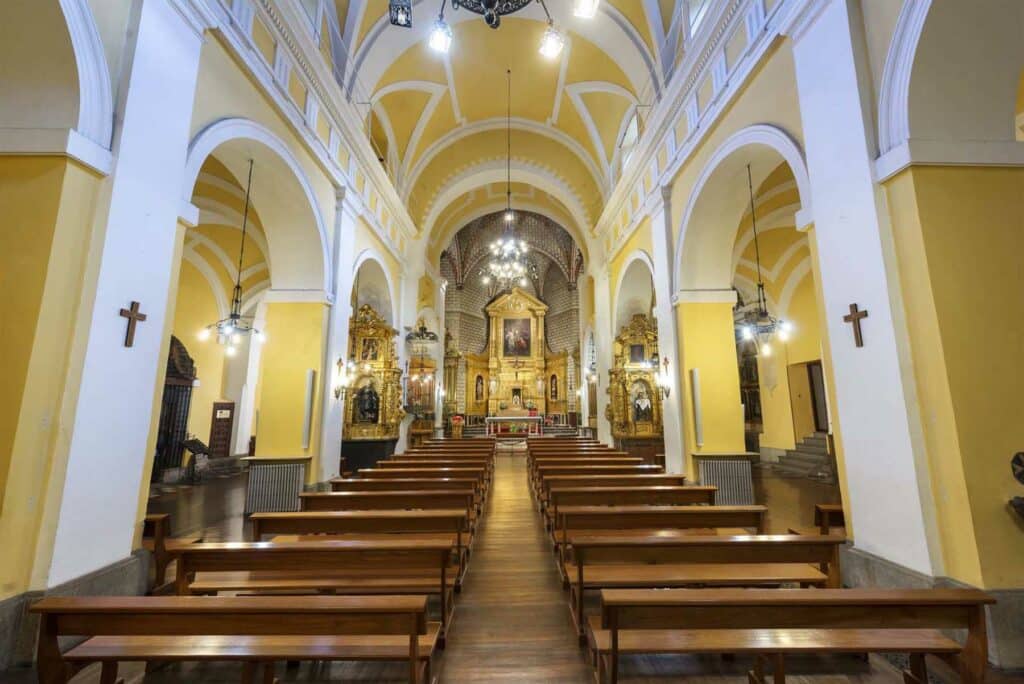
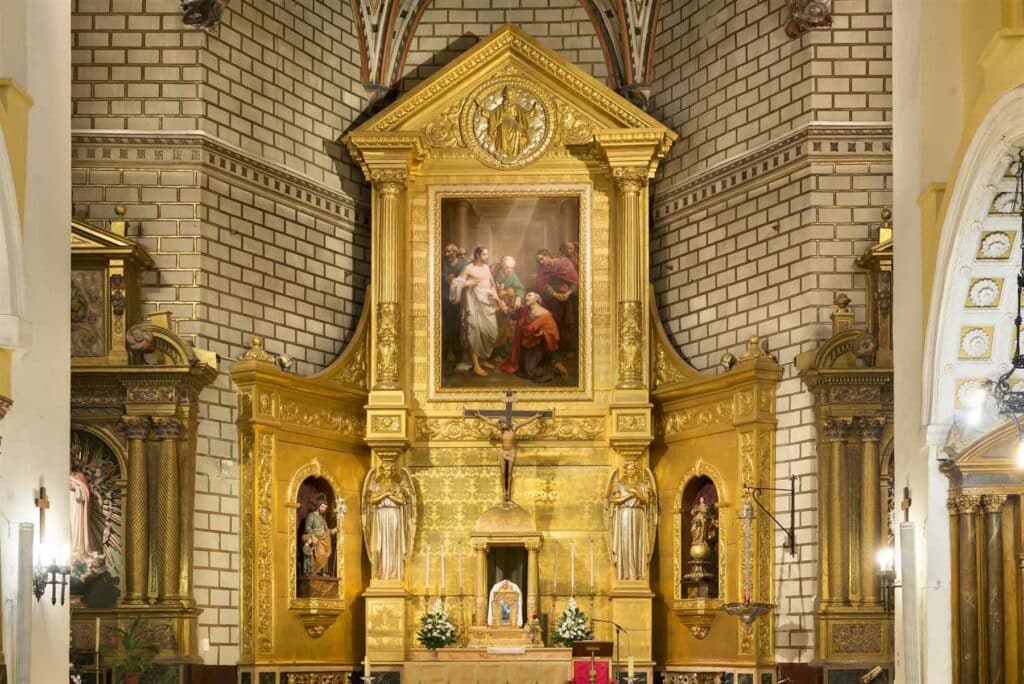
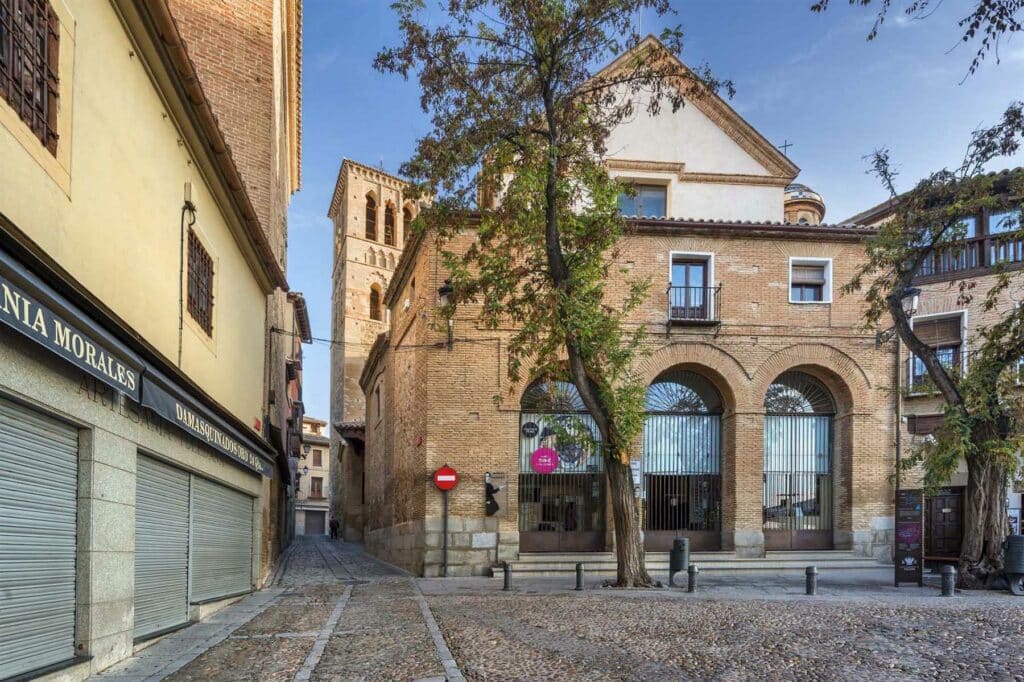
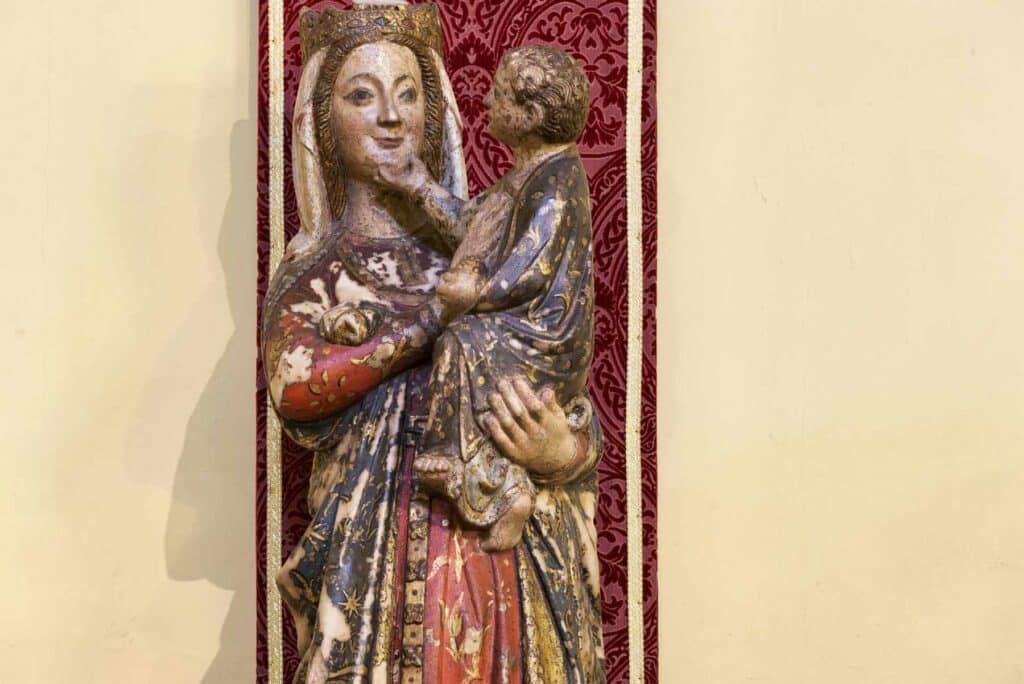
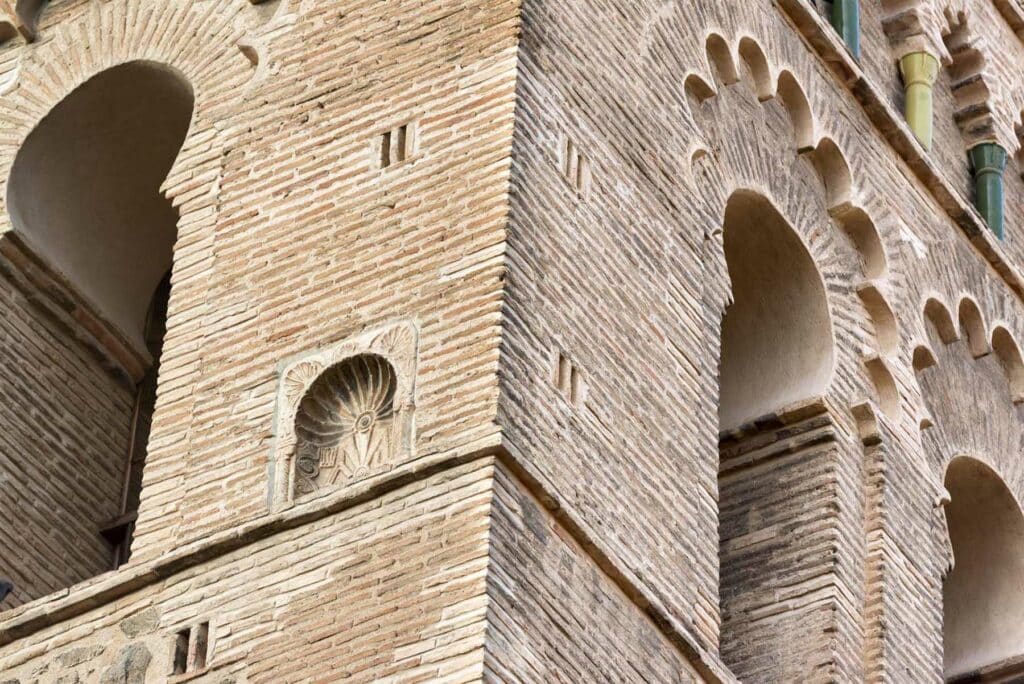
Contact details
- (34) 925 256 098
- tickets@toledomonumental.com
- Pl. del Conde, 4, 45002 Toledo
- Schedule:
1 MARCH – 15 OCTOBER
10:00 – 18:45 *
16 OCTOBER – 28 FEBRUARY
10:00 – 17:45 *
Open from Monday to Sunday.*
*The ticket offices will close 10 minutes before closing time.
* 1 January and 25 December closed.
* 24 and 31 December until 13:00
LOCATION
Welcome to the
Parroquia del Greco (El Greco Parish)
To speak of Santo Tomé is to speak of El Greco and his great work: “The Burial of the Lord of Orgaz”.
For many, it is the most influential pictorial work in universal history. It is one of the most visited tourist places in Spain and its beauty will not leave you indifferent.
Art and painting lovers will find in Santo Tomé a place where they can enjoy the masterpiece of the Cretan painter.
Santo Tomé also offers visitors the opportunity to get to know one of the richest churches in the city in terms of history and art: Welcome to the Parroquia del Greco!
History
of Santo Tomé
Founding of the Church
The parish church must have been founded after the Christian reconquest of the city by Alfonso VI in 1085, as the first record of its existence dates from 1142. From the first Mudejar building, it preserves the large multifoil arch superimposed on the current main arch, which separates the main nave from the presbytery, together with the sturdy buttresses of this part of the nave and a small multifoil arch over a frieze of corner bricks that survives in the upper part, in what was the semicircular chancel of the primitive single-nave church.
A generous gentleman
Don Gonzalo Ruiz de Toledo, notary major of Castile and lord of the town of Orgaz, was well-known for his generous works of charity, contributing to the reconstruction of parish churches such as this one, San Justo and San Bartolomé and building at his own expense the church of San Esteban of the Augustinian convent. In his will, he had ordered the annual donation to this church of mandates consisting of 2 rams, 2 skins of wine, 2 loads of firewood, 16 hens and 800 maravedí for the support of the priests and the poor of the parish, which were to be collected from the inhabitants of his estate of Orgaz. He was also ordered to be buried in this church in the humblest place: the last of the chapels in the nave of the epistle. As the work had not been completed when he died in 1323, he was temporarily buried in the neighbouring church of San Esteban. When in 1327, his deceased body was transferred to his chapel of Saint Tomé, the admiring attendants tell that, while celebrating the liturgy of the dead, they all recognized Saint Augustine himself and the young deacon Saint Stephen, who appeared in the church and with their own hands placed him in the sepulchre, as a reward for his life of charity while they heard: “ Such a reward receives whoever serves God and the saints “.
The historian Dr. Francisco de Pisa in his description of the Imperial City of Toledo (1605)
“And the sermon refers to and tells of a remarkable miracle that happened at the time when they were going to bury the body of this holy knight in this very church: that the glorious St. Stephen the Martyr and St. Augustine (to whom he had a particular devotion in life), coming down from heaven visibly, with their own hands buried him saying these words: Such a reward receives whoever serves God and the saints”.
Art in
Santo Tomé
Architecture
Early medieval reforms
It was notably rebuilt at the beginning of the 14th century, at the expense of the Lord of Orgaz, Don Gonzalo Ruiz de Toledo. At that time, the two side naves with a flat chancel must have been added.
The tower
This is the surviving element of the original church, whose chancel was free-standing. It preserves pieces carved into its walls from the Visigothic period. With a square floor plan and following the layout of Islamic minarets, the interior of the building still preserves the central pillar around which the staircase is arranged. Two brick sections are superimposed on the lower body of taped masonry, in which windows with horseshoe arches open up to house the belfry. Between the two bodies, the frieze of multifoil blind arcade supported by small green and ochre-coloured glazed ceramic columns stands out for its beauty, a detail that links it to the towers of San Román and San Miguel.
The latest reforms
At the beginning of the 16th century, it was decided to reform the chancel by enlarging the main chapel and covering it with complex late Gothic ribbed vaults. The family of the Counts of Ayala had already been using this place as a burial chapel, as evidenced by the numerous black slate tombstones preserved in the walls of the presbytery. It is even believed that the current chapel of La Dolorosa was originally the connecting passageway to the palace of Fuensalida, the main residence of this lineage.
At the beginning of the 17th century, it was decided to refurbish the naves due to their poor condition, and it was decided to renovate the walls, reinforce the pillars with granite bases and change their octagonal profiles for square ones, cut the arches into semicircular profiles and add an impost line under the central barrel vault. The work contracted in 1614 was completed around 1661. The entrance portico was then renovated, until 1972, when, in order not to alter the liturgical life of the church, it was fitted out next to the last gallery of the nave as a museum of El Greco’s paintings, with a separate entrance for visitors.
Sculpture
Valuable sculptures
The church houses important sculptural groups, starting with the oldest, next to the side entrance door: the so-called Virgen de la Sonrisa (Virgin of the Smile), a precious example of a Gothic Virgin with almond-shaped eyes and a wide smile that looks at the Child while he caresses her chin with endearing tenderness. Important 17th century Baroque sculptures are displayed in the main chapel. The powerful figure of St. Elijah in a deep sleep or prophetic vision, reveals his inner strength in his bearded face, his tense hand and the angular folds of his broad robes. In contrast to the restraint of Elijah, the expansion of John the Baptist opens his arms and fingers in a display of technique, without losing an ounce of naturalism. In terms of gold and silver work, the gilded silver monstrance -a neoclassical work by Claudio Vegué from 1883- stands out.
The chapels
Main chapel
The first news on the construction of the current main chapel in Gothic style dates from 1483, when Juan Guas, a few metres away, was beginning the construction of the monastery of San Juan de los Reyes, in the style known as Gothic of the Catholic Monarchs, a symbiosis of Flemish Gothic and Castilian Mudejar. The mastery of constructive solutions is also demonstrated here: a complex eight-pointed star-shaped vault whose ribs are supported by corbels decorated with images of the four evangelists.
Having lost the original altarpiece, the current 19th-century one boasts a fine painting by Vicente López, court painter to King Ferdinand VII and Queen Isabella II, with the theme of the Incredulity of Saint Thomas. The harmonious composition of sculptural figures with academic drawing and pure colours helps to raise Thomas’s doubt and to resolve it through the masterly play of hands and gestures.
Chapel of the Conception
Founded by Pedro de la Fuente, it served as the burial place of the Lord of Orgaz. It was renovated by the architect Nicolás de Vergara el Mozo in 1586 to house the painting by El Greco.
Chapel of la Dolorosa
Its narrow floor plan in a strange orientation with respect to the naves leads us to suspect that it takes advantage of an old passageway connecting it with the Palace of Fuensalida. Among other processional images, it houses two fine Baroque carvings of the Virgin and Saint John belonging to a Calvary.
Chapel of the Incarnation
It is presided over by the altarpiece comissioned in 1566 to architect Nicolás de Vergara el Viejo, with sculptures by Diego de Velasco de Ávila and paintings by Hernando de Ávila, including the main one of the Presentation of Jesus in the temple and above it a penitent Saint Jerome.
Chapel of the Virgin Monte-Sión
Well into the 16th century, in 1559, according to the inscription on the entrance grille, the chapel next to the tower was built in the Gothic style, today called Monte-Sión because it houses the image that was the patron saint of the monastery of San Bernardo, which was subsequently confiscated. Its two narrow sections are covered with two ribbed vaults which share similarities with those of the main chapel. On the outside is the Renaissance baptismal font, moved here from the foot of the nave -the usual place for welcoming catechumens who have not yet entered the communion of the Church. Made of marble, it is decorated with acanthus leaves and a Latin inscription that reads: “Qui crediderit et bautizatus fuerit salvus erit, qui vero non crediderit, condemnatibur”.
Worship
MASS SCHEDULE IN SANTO TOMÉ
WINTER SCHEDULE
|
Diary
|
Vespers
|
Sundays and Holidays
|
|---|---|---|
|
12:00
19:30 |
19:30
|
9:00
12:00 19:30 |
SUMMER SCHEDULE
|
Diary
|
Vespers
|
Sundays and Holidays
|
|---|---|---|
|
12:00
Cancelled in August 20:00 |
20:00
|
9:00
Cancelled in July and August 12:00 20:00 |
Visitors' comments
Comments and opinions of visitors on the Royal College of Doncellas Nobles
Visit the rest of Toledo's outstanding monuments
Visit all monuments at a very special price?
WRISTBAND
Day visit of seven monuments for only 12€
